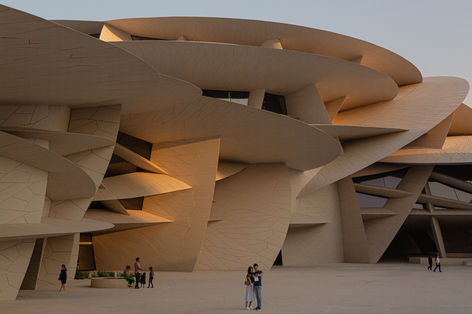Biocapacity
In recent decades, fossil fuels exports have empowered cities in West Asia to punch above their weight. The desert region has become the world’s epitome of economies that leverage imports and liquidate national ecological assets to shoot past growth and population levels that local ecological capacities can sustain.
Today, five out of six countries members of the Gulf Cooperation Council (GCC) are ranked among the 20 countries in the world where the population's ecological footprint exceeds the most biocapacity available locally. This makes the Arabian Peninsula one of the worst biocapacity debtor region in the world, importing ecological capacities to fuel unsustainable consumption-driven lifestyles.
The following are excerpts from reports conducted on West Asia's biocapacity.
All images © Sebastian Castelier
Push It to the Limit
Gulf Arab countries - The capacity of lands and oceans in the Arabian Peninsula to provide provide food and biomaterials, as well as accommodate urban infrastructure and absorb CO2, is low as per global standards. The desert region, one of the most arid in the world, is home to the Empty Quarter, known as Rub’ al-Khali. It is the largest continuous sand desert on Earth.
Against a backdrop of limited ecological capacities, rapid population growth across the region resulted in a spike in the total ecological footprint, which has worsen the Arabian Peninsula's ecological deficit. The biocapacity per person in the United Arab Emirates (UAE) has dropped by 90% since 1980 as the population increased more than tenfold. Yet, the deficit is barely noticeable in daily life, as it is masked by the reliance on imports. Still, it is a risky gamble based on the assumption that wealth can indefinitely offset limited local ecological capacities.
Qatar's Groundwater Gamble
Qatar 🇶🇦- After neighbouring countries imposed a blockade on Qatar in 2017, the emirate hit back. Its political response, aimed at displaying self-sufficiency, involved tapping into layers deep below the land surface to extract more groundwater to boost local agricultural production. Each year, 92% of groundwater withdrawn from Qatar's aquifers is given free of charge to farmers, half of which is used to grow fodder to feeds livestock.
But Qatar, one of the world's most water-stressed countries, cannot afford it. “What Qatar is doing could turn out to be pretty dangerous.” said Alain Gachet, an expert on aquifers. He likens the reservoirs to a bank account, saying, “If you consume the fixed capital, soon or later you will go bankrupt.” Prior to the blockade, Qatar withdrew annually nearly four times as much water from its aquifers than is replenished by rainfall. The UN said the Rus formations is "at risk of total depletion."
cities made of Foreign Sand
Gulf Arab countries - The construction boom that the Arabian Peninsula experiences requires volumes of sand that exceed most countries' natural capacity. Desert sand is unsuitable for construction due to its fine composition. For example, the UAE imported about 14 million tonnes of more angular sand grains between 2020 and 2022, exacerbating the global sand depletion.
Also, the built environment in the Arabian Peninsula is largely ill-suited to the local climate. Imported heat-trapping materials and urban plans contribute to increase the reliance on energy-intensive air conditioners. Ali A. Alraouf, an architect and senior advisor to Qatar’s Urban Planning and Development Authority, has a stark warning: “People in the Gulf are still excited about glass skyscrapers and the ‘do whatever you want and we will air-condition it’. But climate change is real. We cannot waste our money on real estate fantasies anymore.”



























